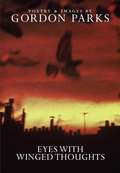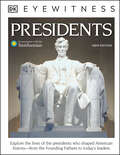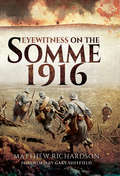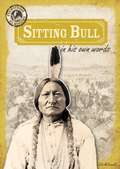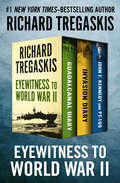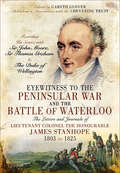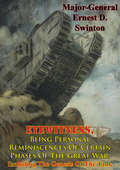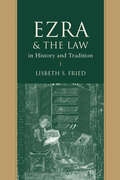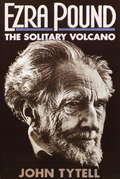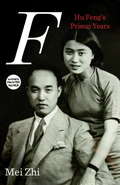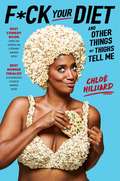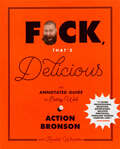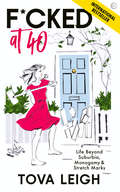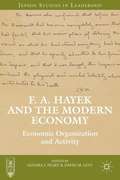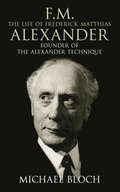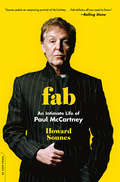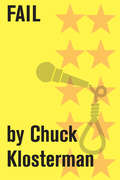- Table View
- List View
Eyes with Winged Thoughts: Poems and Photographs
by Gordon ParksIn Eyes with Winged Thoughts, the forty-four photographs and fifty-eight poems, reflecting on his long and extraordinary life, offer a rare glimpse of his thoughts and feelings about everything from romantic love to the Iraq war and the passing of Pope John Paul II. He has done it all. Gordon Parks's life is an astonishing litany of firsts: in the 1940s he was the first African-American photographer to work for the Farm Security Administration and for Vogue and Life magazines; in the 1960s he would become the first African-American director of a major motion picture. A dominating figure in contemporary American culture, he is an artist of uncompromising vision and creativity. In 2002 Parks received the Jackie Robinson Foundation Lifetime Achievement Award and was inducted into the International Photography Hall of Fame, just the latest in a series of honors that began when he received a prestigious Julius Rosenwald Fellowship in 1941 and which now includes an Emmy, a National Medal of the Arts, and over fifty honorary doctorates. Now in his nineties, he could easily rest on his laurels, but the luminous photographs on display in Eyes with Winged Thoughts and the poems -- some meditative and lyrical, some raw with emotion about the war in Iraq and the tragedy of the tsunami -- show that he is still a true American Renaissance man.
Eyewitness Auschwitz: three years in the gas chambers
by Filip Müller Susanne FlatauerFilip Müller came to Auschwitz with one of the earliest transports from Slovakia in April 1942 and began working in the gassing installations and crematoria in May. He was still alive when the gassings ceased in November 1944. He saw multitudes come and disappear; by sheer luck he survived. Müller is neither a historian nor a psychologist; he is a source-one of the few prisoners who saw the Jewish people die and lived to tell about it. Eyewitness Auschwitz is thus one of the key documents of the Holocaust. "A shattering, centrally important testimony."-From the Foreword by Yehuda Bauer "Riveting...It is a tale of unprecedented, incomparable horror. Profoundly, intensely painful; but it is essential reading."-JewishPress Features
Eyewitness Presidents (DK Eyewitness)
by DKAn informative and visual guide to America's highest office, this DK Eyewitness book explores the history of the White House and the presidents who have served in it.Written in association with the Smithsonian Institution, this beautiful visual reference book provides mini-biographies and trivia for budding historians, along with hundreds of photos that illustrate the lives of Presidents that shaped American history.Students and teachers alike will find intriguing facts in this comprehensive history book. Each president's feature starts with their early lives and takes the reader through their political careers. Discover how they came into office and what happened after they won their presidential elections. Be an eyewitness to the history of the inhabitants of the White House through full-color photographs of famous paintings, campaign memorabilia, handwritten letters, and even historical artifacts belonging to each President.As the first person to be called the President of the United States, George Washington helped unite the colonies and win independence from King George of Great Britain. Learn about his revolutionary leadership and the forging of the Constitution. Discover how Abraham Lincoln saved the Union from the American Civil War, and how Thomas Jefferson doubled the size of the nation with the Louisiana Purchase.The book includes a section of presidential speeches such as John F. Kennedy&’s inaugural address and Ronald Reagan's Evil Empire speech. Read about other 20th century presidents such George W. Bush, Bill Clinton, and the first Black president Barack Obama. This new edition introduces America&’s newest Commander-in-chief Joe Biden.The History of the US Presidents From George Washington to Joe BidenDK Eyewitness Books: Presidents uses a unique integrated format with text and pictures to give insight into the lives of the men that have held the highest position in the USA. Eyewitness educational books are a favorite for school-aged students, parents, and teachers alike.Inside this fascinating visual reference book: • Includes a feature on every American President in history - right up to Joe Biden • Presidential facts and trivia in bite-sized information that is easy to follow for younger readers • Hundreds of photos of famous artworks, historical artifacts, and handwritten letters • Includes a section on some of history's famous American political speeches More from DK Books:For more interesting facts about American Presidents look for DK Books The Presidents Visual Encyclopedia. If you enjoy DK Eyewitness Books: Presidents there are over 170 Eyewitness titles to choose from, covering a large variety of topics. For more history reference books DK Eyewitness: Victorians, DK Eyewitness: Aztec, and DK Eyewitness: World War I - just a few of the titles available.
Eyewitness on the Somme 1916
by Matthew RichardsonWhat was the soldiers experience of the Battle of the Somme? How did the men who were there record their part in the fighting or remember it afterwards? How can we, 100 years later, gain an insight into one of the most famous and contentious - episodes of the Great War? Matthew Richardsons graphic account, which is based on the vivid personal testimony of those who took part, offers us a direct impression of the reality of the battle from the perspective of the ordinary soldiers and junior officers on the front line. He draws heavily on previously unpublished personal accounts letters, diaries, and memoirs, some never before translated into English to build up a multifaceted picture of the Somme offensive from the first disastrous day of the attack, through the subsequent operations between July and November 1916. In their own words, the soldiers who were caught up in the conflict recall in unflinching detail the fighting across the entire Somme battlefield. The narrative features the recollections of British, Commonwealth, French and American soldiers, and interweaves their testimony with descriptions left by their German adversaries. For the first time in a single volume, the reader has the opportunity to explore all facets of this momentous five-month-long struggle. Over 100 black-and-white contemporary photographs, many previously unpublished, accompany the text, whilst a selection of artifacts recovered from the battlefield is illustrated in colour. These striking objects bear silent witness to the ferocity of the battle, and often reflect some moment of personal tragedy.
Eyewitness to History: Sitting Bull in His Own Words
by Julia McdonnellSitting Bull, the well-known Native American chief, united the Lakota Sioux in the northern Great Plains and led a mighty resistance of tribes who refused to be placed on reservations. This struggle resulted in violence, most famously at Little Bighorn in 1876. Though Sitting Bull fled to Canada, he ultimately returned to the United States in 1881. This book uses Sitting Bull's powerful words to examine the leader's considerable courage and determination as well as his aspirations for Native Americans.
Eyewitness to Power: The Essence of Leadership Nixon to Clinton
by David GergenFrom Nixon to Clinton, Watergate to Whitewater, few Americans have observed the ups and downs of presidential leadership more closely over the past thirty years than David Gergen. A White House adviser to four presidents, both Republican and Democrat, he offers a vivid, behind-the-scenes account of their struggles to exer- cise power and draws from them key lessons for leaders of the future. Gergen begins Eyewitness to Power with his reminiscence of being the thirty-year-old chief of the White House speechwriting team under Richard Nixon, a young man at the center of the Watergate storm. He analyzes what made Nixon strong-and then brought him crashing down: Why Nixon was the best global strategist among recent presidents. How others may gain his strategic sense. How Nixon allowed his presidency to spin out of control. Why the demons within destroyed him. What lessons there are in Nixon's disaster. Gergen recounts how President Ford recruited him to help shore up his White House as special counsel. Here Gergen considers: Why Ford is one of our most underrated presidents. Why his pardon of Nixon was right on the merits but was so mishandled that it cost him his presidency. Even in his brief tenure, Ford offers lessons of leadership for others, as Gergen explains. Though Gergen had worked in two campaigns against him, Ronald Reagan called him back to the White House again, where he served as the Gipper's first director of communications. Here he describes: How Reagan succeeded where others have failed. Why his temperament was more important than his intelligence. How he mastered relations with Congress and the press. The secrets of "the Great Communicator" and why his speeches were the most effective since those of John Kennedy and Franklin Roosevelt.
Eyewitness to World War II: Guadalcanal Diary, Invasion Diary, and John F. Kennedy and PT-109
by Richard TregaskisThree classic accounts of WWII from a reporter who &“shaped America&’s understanding of the war, and influenced every account that came after&” (Mark Bowden). Volunteer combat correspondent Richard Tregaskis risked life and limb to give American readers a soldier&’s–eye view of the Second World War. These three tales of bravery and sacrifice shed light on the Greatest Generation&’s darkest hours. Guadalcanal Diary: In August 1942, Tregaskis landed with the US Marines on Tulagi and Guadalcanal Islands in the South Pacific for the first major Allied offensive against Japanese forces. He details the first two months of the campaign and describes the courage and camaraderie of young marines who prepared for battle knowing that one in four of them wouldn&’t make it home. An instant #1 New York Times bestseller and the basis for a popular film of the same name, Guadalcanal Diary is a masterpiece of war journalism that &“captures the spirit of men in battle&” (John Toland). Invasion Diary: In July 1943, Tregaskis joined the Allied forces in Sicily and Italy and documented some of the fiercest fighting of the war, from bombing runs over Rome to the defense of the Salerno beachhead against heavy artillery fire to the fall of Naples. In compelling and evocative prose, Tregaskis depicts the terror and excitement of life on the front lines and his own harrowing brush with death when a chunk of German shrapnel pierced his helmet and shattered his skull. Invasion Diary is &“required reading for all who want to know how armies fight&” (Library Journal). John F. Kennedy and PT-109: In the early morning hours of August 2, 1943, the Japanese destroyer Amagiri sliced into US Navy motor torpedo boat PT-109 near the Solomon Islands. Ten surviving crewmembers and their young skipper, Lt. John F. Kennedy, clung to the wreckage. Over the next three days, the privileged son of a Boston multimillionaire displayed extraordinary courage and leadership as he risked his life to shepherd his crew to safety and coordinate a daring rescue mission deep in enemy territory. Lieutenant Kennedy earned a Navy and Marine Corps Medal and a Purple Heart, and the story of PT-109 captured the public&’s imagination and helped propel Kennedy all the way to the White House. Acclaimed war correspondent Tregaskis—who once beat out the future president for a spot on the Harvard University swim team—brings this remarkable chapter in American history to vivid life.
Eyewitness to the Peninsular War and the Battle of Waterloo: The Letters and Journals of Lieutenant Colonel James Stanhope 1803 to 1825 Recording His Service with Sir John Moore, Sir Thomas Graham and the Duke of Wellington
by Gareth GloverThe journals of the Honourable James Stanhope are among the most remarkable eyewitness accounts of the Peninsular War and the Battle of Waterloo, and yet they have never been published before. The long fight against the French in Portugal and Spain, the campaign in Holland, then the Battle of Waterloo James Stanhope lived through all these extraordinary events and recorded them in vivid detail.Stanhope served as an aide de camp to the major commanders of the day Wellington, General Graham, Lord Paget, the Duke of York among them. And he described his experiences and observations in a lucid and candid prose that makes his journals of great historical value and of compelling interest to us today. His writing gives a graphic inside view of the military and political situation of the time as it was perceived at the top levels of the British army, and he depicts the daily experience of campaigning during the Napoleonic Wars in an unforgettable way.
Eyewitness, Being Personal Reminiscences Of Certain Phases Of The Great War,: Including The Genesis Of The Tank [Illustrated Edition]
by Major-General Ernest D. SwintonIncludes the First World War Illustrations Pack - 73 battle plans and diagrams and 198 photosMajor-General Ernest Swinton had already had a long and illustrious career in the British Army before the advent of the First World War in 1914. Appointed as the official war correspondent by the war Minister Lord Kitchener in 1914, his reporting home was the only way for the British people to follow the war as journalists were at that time banned at the front. In these dispatches from the front Swinton told the public of the bloody fighting in Flanders and the heroic efforts of the Allies to stop the German Juggernaut. The miserable conditions and bloody siege warfare of the trenches left a lasting impression on him and he looked to a scientific solution to the muddy stalemate of the Western Front. He would gain lasting fame as the architect of the "tank" project that was to revolutionize warfare in the First World War and for many years thereafter. In this volume of reminiscences he traces his involvement in the early years of the war and his later years as the driving force in the development and adoption of the tank.
Ezio Pinza: An Autobiography
by Ezio Pinza Robert Magidoff Doris PinzaThe bass, Ezio Pinza (1892-1957) gives an account of his childhood in Italy, arrival in the United States, his opera career at the Met from 1926 to 1948, and his Broadway success co-starring with Mary Martin in Rodgers and Hammerstein's South Pacific. He sang many opera roles but was especially noted for Don Giovanni, Mozart's Figaro and Boris Godunov. Some of his recordings are still available on CD.
Ezra & the Law in History and Tradition (Studies on Personalities of the Old Testament)
by Lisbeth S. FriedDiscover the real Ezra in this in-depth study of the Biblical figure that separates historical facts from cultural legends.The historical Ezra was sent to Jerusalem as an emissary of the Persian monarch. What was his task? According to the Bible, the Persian king sent Ezra to bring the Torah, the five books of the Laws of Moses, to the Jews. Modern scholars have claimed not only that Ezra brought the Torah to Jerusalem, but also that he actually wrote it, and in so doing Ezra created Judaism. Without Ezra, they say, Judaism would not exist.In Ezra and the Law in History and Tradition, Lisbeth S. Fried separates historical fact from biblical legend. Drawing on inscriptions from the Achaemenid Empire, she presents the historical Ezra in the context of authentic Persian administrative practices and concludes that Ezra, the Persian official, neither wrote nor edited the Torah, nor would he even have known it. The origin of Judaism, so often associated with Ezra by modern scholars, must be sought elsewhere.After discussing the historical Ezra, Fried examines ancient, medieval, and modern views of him, explaining how each originated, and why. She relates the stories told about Ezra by medieval Christians to explain why their Greek Old Testament differs from the Hebrew Bible, as well as the explanations offered by medieval Samaritans concerning how their Samaritan Bible varies from the one the Jews use. Church Fathers as well as medieval Samaritan writers explained the differences by claiming that Ezra falsified the Bible when he rewrote it, so that in effect, it is not the book that Moses wrote but something else. Moslem scholars also maintain that Ezra falsified the Old Testament, since Mohammed, the last judgment, and Heaven and Hell are revealed in it. In contrast Jewish Talmudic writers viewed Ezra both as a second Moses and as the prophet Malachi.In the process of describing ancient, medieval, and modern views of Ezra, Fried brings out various understandings of God, God’s law, and God’s plan for our salvation.“A responsible yet memorable journey into the life and afterlife of Ezra as a key personality in the history, literature and reflection of religious and scholarly communities over the past 2,500 years. A worthwhile and informative read!” —Mark J. Boda, professor of Old Testament, McMaster Divinity College, professor of theology, McMaster University
Ezra Pound
by John TytellWilliam Butler Yeats, his friend and fellow poet, called Pound (1885-1972) a "solitary volcano. " Drawing on unpublished letters, published personal accounts, psychiatric reports, FBI files, and interviews, a Greenwich Village writer explores the turmoil that informed Pound's influential Imagist poems (e. g. The Cantos), including his arrest for treason in 1945. Tytell includes photos. A new introduction might have shed light on the timing of this reprint; the biography was originally published in 1987 by Anchor Press, New York. Annotation ©2004 Book News, Inc. , Portland, OR (booknews. com)
F
by Gregor Benton Mei ZhiHu Feng, the "counterrevolutionary" leader of a banned literary school, spent twenty-five years in Chinese Communist Party prison system. But back in the early days of Communist China he was among the party's chief literary theoreticians and critics--at least until factional infighting, and his short fuse, made him persona non grata among the establishment.His wife, Mei Zhi, shared his incarceration for many years. F is her account of that time, beginning ten years after Hu Feng's initial arrest, as she navigates the party's Byzantine prison bureaucracy, searching for his whereabouts. Eventually imprisoned then released, she cares for her husband in his rage and suffering, watching his descent into madness as the excesses of the Cultural Revolution take their toll.Both an intimate portrait of Mei Zhi's life with Hu Feng and a stark account of the prison system and life under Mao, F is at once beautiful and harrowing.
F*ck It, I'll Start Tomorrow: A True Story
by Action Bronson Bonnie StephensFrom the New York Times bestselling author, chef-turned-rapper, and host of Viceland’s F*ck, That’s Delicious and The Untitled Action Bronson Show, F*ck It, I’ll Start Tomorrow is a brutally honest chronicle about struggles with weight, food addiction, and the journey to self-acceptance. <p><p> In his signature voice, Action Bronson shares all that he’s learned in the past decade to help you help yourself. This isn’t a road map to attaining a so-called perfect body. Instead, Bronson will share his journey to find confidence, keep the negative vibes at bay, stay sane, chill out, and not look in the mirror hoping to see anyone but yourself. F*ck It, I’ll Start Tomorrow is not about losing weight—it’s about being and feeling excellent regardless of your size or shape. It’s about living f*cking healthy, period.
F*ck Your Diet: And Other Things My Thighs Tell Me
by Chloé HilliardFans of Issa Rae and Phoebe Robinson will love this collection of laugh-out-loud funny and insightful essays that explore race, feminism, pop culture, and how society reinforces the message that we are nothing without the perfect body. By the time Chloé Hilliard was 12, she wore a size 12—both shoe and dress—and stood over six feet tall. Fitting in was never an option. That didn&’t stop her from trying. Cursed with a &“slow metabolism,&” &“baby weight,&” and &“big bones,&”—the fat trilogy—Chloe turned to fad diets, starvation, pills, and workouts, all of which failed. Realizing that everything—from government policies to corporate capitalism—directly impacts our relationship with food and our waistlines, Chloé changed her outlook on herself and hopes others will do the same for themselves. The perfect mix of cultural commentary, conspiracies, and confessions, F*ck Your Diet pokes fun at the all too familiar, misguided quest for better health, permanent weight loss, and a sense of self-worth.
F*ck, That's Delicious: An Annotated Guide to Eating Well
by Rachel Wharton Action BronsonThe rapper, chef, TV star, and author of Stoned Beyond Belief offers up a love letter to food inspired by his childhood, family, tours, and travels.This ain’t no cookbook. This ain’t no memoir. This is Action Bronson’s devotional, a book about the overwhelming power of delicious—no, f*cking amazing—food. Bronson is this era’s Homer, and F*ck, That’s Delicious is a modern-day Odyssey, replete with orgiastic recipes, world travel, siren songs, and weed. Illustrated, packed with images, and unlike any book in the entire galaxy, Bronson’s F*ck, That’s Delicious includes forty-plus recipes inspired by his childhood, family, tours, and travels. Journey from bagels with cheese that represent familial love to the sex and Big Macs of upstate New York fat camp and ultimately to the world’s most coveted five-star temples of gastronomy. And: the tacos in LA. The best Dominican chimis. Jamaican jerk. Hand-rolled pasta from Mario. Secrets to good eating from Massimo. Meyhem Lauren’s Chicken Patty Potpie. And more! more! more!New York Times BestsellerWinner of the IACP Cookbook Design Award“This magnificent tome is filled with both the recognizable and the perplexing. And, best of all, I can make it at home and so can you. . . . This is a book that is at once a testament to a wild palate, to a man with a gastronomic vision, to a hip-hop artist of the top of the top category, and a student of life with legendary curiosity.” —Mario Batali, from the foreword“Through his career on VICELAND, Bronson has become one of the Internet’s most entertaining food personalities—and his book delivers just as much loud enthusiasm for eating fucking delicious things as his show by the same name.” —GQ magazine
F*cked at 40: Life Beyond Suburbia, Monogamy and Stretch Marks
by Tova LeighFor every woman that has ever felt trapped. A funny, raw and empowering mid-life-crisis-with-a-difference, vlogger, mother, lover businesswoman and social media phenomenon Tova Leigh explores what the hell you are supposed to do when you find yourself living a life you don't remember signing up for. &“I was bored, angry, tired and sad. I felt all alone yet I had nothing to complain about. I had a good job, a husband who as far as I could tell wasn&’t shagging his assistant, three children who apart from being the occasional assholes were pretty good kids; a house, a dog and everything else we are told as little girls we should aspire to. But inside, I was growing restless. I was sick of having the same dull conversations about meal plans and kid-friendly holidays. I was frustrated with having the same married sex I&’d been having for the past seven years, or not having any sex at all. I didn&’t want to be looked at as just a &‘mom&’. I wanted to be desired, to make someone&’s hair stand on end and go crazy for me. I didn&’t want to live by some label that didn&’t represent me. I looked at my messy SUV after my yoga class one morning and I wanted to vomit on it all. I panicked, thinking about how I am slowly approaching middle age and the menopause and I wondered how many years do I have left of being &‘f**ckable&’ before everything starts going downhill?&” We have many sides to us, most of the time we think we must choose just one character and stick to it. But the truth is, we can be all of them without having to choose. I am finally able to show the world that I am a bit of an idiot who dances around her kitchen in her knickers and makes silly videos with her husband, as well as a responsible parent and a businesswoman who runs her own company. When you find authenticity it&’s hard to go back. It&’s like opening a door to the truth and starting to breathe a new type of air. This discovery is what prompted me to write. It&’s my way of saying HERE I AM. I don&’t think we should be sorry for who we are. None of us.
F. A. Hayek And The Modern Economy
by Sandra J. Peart David M. LevyWhat is the role of human agency in Friedrich Hayek's thought? This volume situates Hayek's writing as it relates to economic organization and activity, particularly to assess what role Hayek assigns to leaders in determining economic progress.
F. Scott Fitzgerald (Literature and Life)
by Rose A. GalloF. SCOTT FITZGERALD captured for all time the feverish gaiety, the high expectations, the small disappointments of the Roaring Twenties--and in the process his own life became an American legend. Some critics have said that Fitzgerald’s writing declined after The Great Gatsby. Rose Gallo takes exception to that view. In this refreshing introduction to Fitzgerald’s work, she traces the development of all of the writer’s novels chronologically--from This Side of Paradise (1920) to The Last Tycoon (published posthumously, 1941)--and examines with a discerning eye some of his major short stories. Fitzgerald’s fiction, writes the author, was shaped not only by the 1920s but by the grander, more enduring mythologies of the past. Author Rose Adrienne Gallo is Associate Professor of English at Seton Hall University.
F. Scott Fitzgerald, A Biography
by Andre Le Vot William ByronA carefully crafted biography with literary criticism.
F. Scott Fitzgerald: A Composite Biography
by Niklas Salmose David RennieA comprehensive study of the life of F. Scott Fitzgerald, related in two-year chapters by twenty-three leading writers on the Jazz Age author &“There never was a good biography of a novelist,&” F. Scott Fitzgerald wrote in The Crack-Up. &“There couldn&’t be. He is too many people, if he&’s any good.&” Fitzgerald, a good novelist by any measure, has tested this challenge to the biographer&’s art. A new star illuminating the literary scene; a chronicler of the Jazz Age in all its brilliance and tarnish; a romantic symbol of the American century; an acute observer of society&’s best and worst, and of his own star-crossed career; a midlife burnout at forty-four, leaving an unfinished masterpiece in his wake—he was a man of many aspects, a writer whose complexity and multitudes this composite biography finally aptly portrays. Bringing together twenty-three leading writers and scholars on Fitzgerald, each focusing on two years of his life, this volume takes its cue from Henry James&’s remark, cited by preeminent Fitzgerald biographer Scott Donaldson: &“The whole of anything is never told; you can only take what groups together.&” F. Scott Fitzgerald: A Composite Biography presents a new way of &“grouping together&” biographical material and perspectives, considering from various angles the author's best-known works as well as understudied writings, including neglected stories and forays into autobiography such as &“What I Think and Feel at 25&” and &“How to Live on $36,000 a Year.&” The glamor and fame that made F. Scott and Zelda mythic figures of their time appear here alongside the personal experiences that he occasionally included in his writing: the beginnings as well as the poignant end; the literary relationships that informed and framed his work, set against solitary effort, fame, and failures. This remarkable study of F. Scott Fitzgerald reflects the multifaceted whole of a &“life in many parts&” in new and revelatory ways. Contributors: Jade Broughton Adams; Ronald Berman; William Blazek, Liverpool Hope U; Elisabeth Bouzonviller, Jean Monnet U; Jackson Bryer, U of Maryland; Kirk Curnutt, Troy U; Catherine Delesalle-Nancey, U Jean Moulin Lyon 3; Scott Donaldson; Kayla Forrest; Marie-Agnès Gay, U Jean Moulin Lyon 3; Joel Kabot, U of Maryland, Baltimore; Sara Kosiba; Arne Lunde, U of California, Los Angeles; Bryant Mangum, Virginia Commonwealth U; Martina Mastandrea; Philip McGowan, Queen&’s U Belfast; David Page; Walter Raubicheck, Pace U; Ross Tangedal, U of Wisconsin–Stevens Point; Helen Turner, Linnaeus U; James L. W. West III, Pennsylvania State U.
F.M.: Founder of the Alexander Technique
by Michael BlochThe Alexander Technique is a method of muscular re-education, which has become standard training for actors, dancers and singers, and is practised for health reasons all over the world. Its founder, Frederick Matthias Alexander (1869-1955), was an Australian actor who stumbled upon it in the 1890s after studying himself in mirrors to discover why he had lost his voice. He realised that most people suffered from the same postural defects he had noticed in himself, and that this explained much of what went wrong with them. F.M. (as he was known) came to London in 1904 and became enormously successful. During the First World War he practised in America with equal success, converting the American philosopher John Dewey to his cause. He wrote four books (all still in print), and his supporters included Aldous Huxley, George Bernard Shaw and Stafford Cripps. He was, however, a difficult and argumentative man who made enemies. Towards the end of his life he embarked on a libel action against the South African government, which had accused him of charlatanism. He won, and went on practising and propagating his technique until his death aged 86.
F.M.: Founder of the Alexander Technique
by Michael BlochThe Alexander Technique is a method of muscular re-education, which has become standard training for actors, dancers and singers, and is practised for health reasons all over the world. Its founder, Frederick Matthias Alexander (1869-1955), was an Australian actor who stumbled upon it in the 1890s after studying himself in mirrors to discover why he had lost his voice. He realised that most people suffered from the same postural defects he had noticed in himself, and that this explained much of what went wrong with them. F.M. (as he was known) came to London in 1904 and became enormously successful. During the First World War he practised in America with equal success, converting the American philosopher John Dewey to his cause. He wrote four books (all still in print), and his supporters included Aldous Huxley, George Bernard Shaw and Stafford Cripps. He was, however, a difficult and argumentative man who made enemies. Towards the end of his life he embarked on a libel action against the South African government, which had accused him of charlatanism. He won, and went on practising and propagating his technique until his death aged 86.
FAB An Intimate Life of Paul McCartney: An Intimate Life of Paul McCartney
by Howard SounesAuthor of an exceptionally good biography of Bob Dylan, Sounes doesn't fare quite as well with this substantial volume on the life of Paul McCartney. While the author has obviously done his research, there's relatively little new of significance here, other than some details on McCartney's relationships. Unfortunately for the author, those who could have shed more light on McCartney as a musician and songwriter are either not talking (Ringo Starr) or unavailable for comment (John Lennon, George Harrison). While there is little (other than page count) to make Sounes' book stand apart from other recent McCartney bios, the author's lively style makes his book an interesting read. Published in the U. K. and Australia by HarperCollins 2010. Annotation ©2011 Book News, Inc. , Portland, OR (booknews. com)
FAIL
by Chuck KlostermanOriginally collected in Eating the Dinosaur and now available both as a stand-alone essay and in the ebook collection Chuck Klosterman on Media and Culture, this essay is about Ted Kaczynski.
